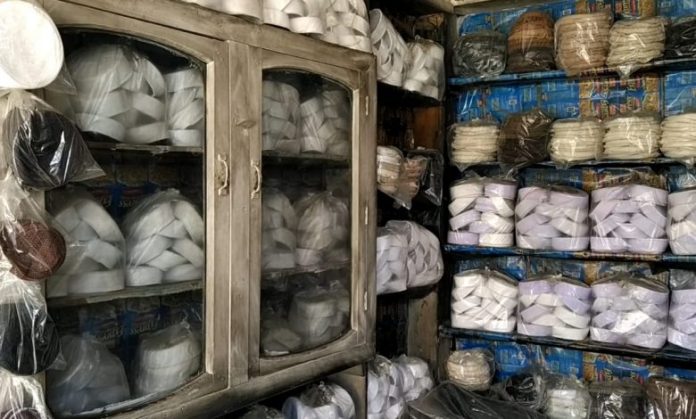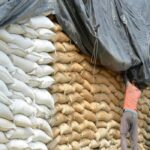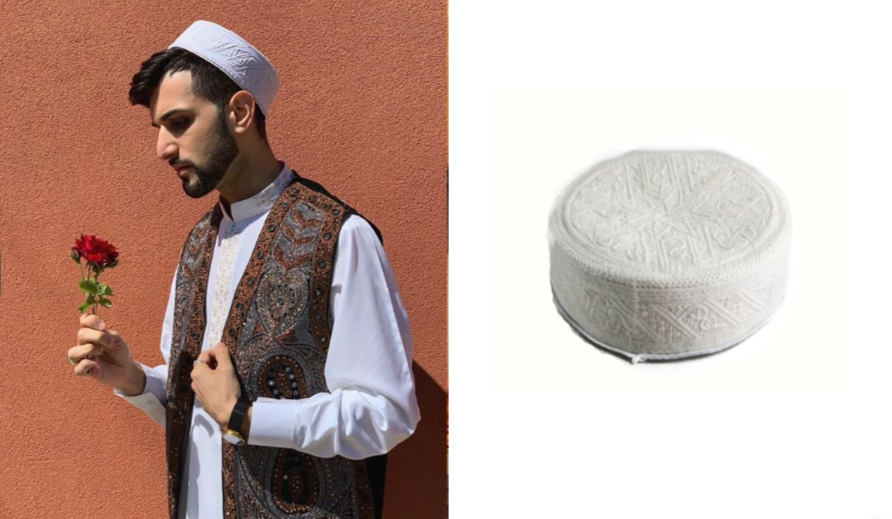Though Dir is widely known for its lush green valleys and beautiful waterfalls. It is its traditional Khaal cap that has earned a name for the District. You might have seen some Pashtuns from northern Khyber Pakhtunkhwa wearing white caps. These are known as the Dir caps (or Dirojay Topai in Pashto). Siraj ul Haq, chief of Jamaat-e-lslami also wears the same cap.
Every year on May 2, the people of the Lower Dir district in Khyber Pakhtunkhwa celebrate White Cap Day. The tradition involves wearing the famous Dir Cap, and celebrating the hardworking Pashtun women who make these caps by hand.
In a Pashtun society, covering one’s head with a cap or turban is a symbol of honor and respect and it tells about the aesthetic sense of the wearer as well. The Dir Cap has a long history and is seen as a symbol of Pashtun honor, respect and self-reliance. These caps, made by Pashtun women of the Dir District, are not just regular caps. They tell a story of self-reliance and financial independence.
History of Dir Caps dates back to the reign of the Nawab of Dir
The story of the Dir caps dates backs to the time when Dir was an independent state who had built its economy from the ground up without anyone’s help but using their own resources and manpower. The cap business was a major part of the Dir State’s exports.
These white caps tells the unspeakable story of hundreds of Pashtun women who not only helped their men financially, but also put a white crown on their heads.
According to Muhammad Saleh, a local resident, the tradition of the Dir cap dates back to the reign of Nawab of Dir and is over 100 years old, adding that the cap is made using white cloth and woolen thread and can be made by hand or machine.
This head-gear is not only popular in Pakistan, but in the rest of the world where the Pashtuns live. The caps are also exported to Afghanistan, Turkestan and other Asian countries.
Caps prepared by hand consume more time so they are more expensive, with prices ranging from 2,000 to 4,000 rupees. The caps made with machines have good finishing and are sold for Rs 250 to Rs 400 a piece in the market.
Umm e Adnan, an expert in making the Dir cap, said that she has been making the caps for the past 20 years. She explained that it takes a whole day to make a cap and that the cap is in high demand among men of all ages.
The caps are sold in over fifty shops in Timergara and Khaal Bazar in Lower Dir, as well as in special shops dedicated to the Dir caps in other bazaars of the district, she added.

Dir cap is made of cloth, white “Latta” and thread and sometimes cotton. Traditionally, these caps were made by hand. But now, most manufacturers use special machines which eases up the process. The thread used around the cap called “mazay” was also prepared by hand in early days but now the both the cap and “mazay” are made with machines.
Bazar Akhunzada Kalimullah, President of Khaal Bazar, said that the Dir cap is an important part of the region’s culture and tradition. Pashtuns wear these caps on special events like Eid, Friday prayer etc. He said women of Khaal tehsil are engaged in this cap making and there is huge industry of these caps here, but it needs the government’s attention.
The craft is slowly fading away due to challenges
The local elders recall that, back in the days, the market of Khaal caps was flourishing and local businessmen were earning handsome money from this business, but then the Chinese and Quetta caps arrived and this business started losing attraction. The caps imported from China are less expensive, therfore, people often prefer to buy those instead. However, the elders of the area believe that the caps from China and Quetta cannot beat Khaal caps in quality.
The local elders claimed that such caps cannot be made anywhere in the world. They said eight to 20 different types of caps were made in Dir.
Apart from the challenges from the cheap imported caps, another challenge these traditional Dir caps face is the losing interest of the local women in making these. Local elders recall that women in the old days would put a lot of time in making these caps, but now the young generation has no time. The families which are financially in a good position have lost interest in making caps. Those who want to continue to earn livelihood for their families are still in this profession.
Shamim Kausar, a government servant who makes Dir caps, told Tribal News Network that she had been preparing caps with hands when she didn’t have a government job. Now she only makes some during her free time.
She said if the governent provided training and facilities to the local girls in schools, it would not only promote the craft but also enable them to become financially independent.
Locals urge government to revive and promote Khaal cap business in Dir
Kalimullah, President of the Khaal Bazar, also believes that the cap-making craft can be further promoted if training centres are built for makers of these caps. He further said that the women of Khaal must be trained about online trading and marketing where they can sale the caps with much ease and make more profits.
Miftahuddin, another local resident, noted that while the women who make the caps put in a lot of effort, their work is not always properly recognized. He called on the government to provide modern machines to help the women make the caps more efficiently and to promote their work at the global level.
The women who make the caps also complained that they didn’t receive good price for their hard work.
“We are given Rs 250 for a cap, which can easily be sold for a much higher price in the market,” one woman complained.
She said that some local women gave their caps to the shopkeepers for sale, but they exploited them and didn’t give them enough money. Some local men take the caps to the Tableeghi Ijtima in Lahore for sale where there is a great demand for the white Dir cap.
Despite these challenges, the tradition of the Dir cap continues to thrive in Lower Dir. On White Cap Day, people of all ages continue to celebrate the day wearing the iconic cap, and posting their photos on social media.


